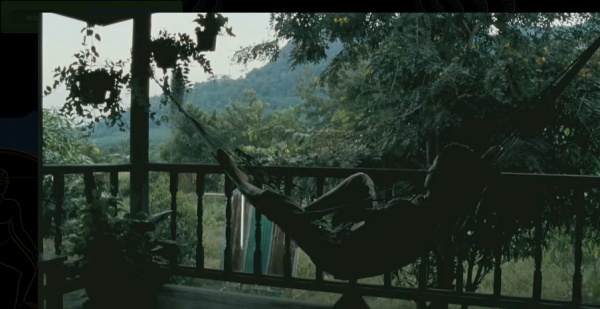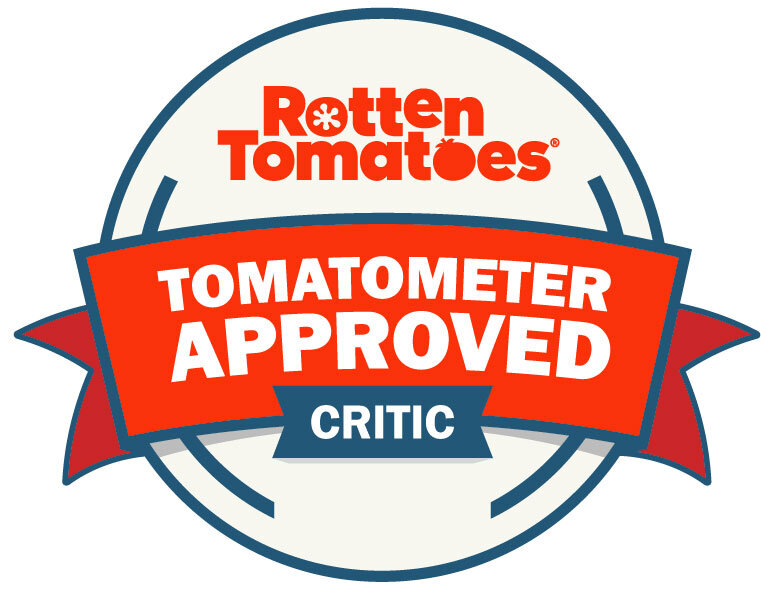2010 // USA // Kelly Reichardt // May 15, 2011 // Theatrical Print (Landmark Plaza Frontenac Cinema)
[Note: This post contains minor spoilers.]
In general, I don't think it's too controversial to assert that the formal aspects of a Kelly Reichardt film are less remarkable than depth and allure of the underlying story. The director's straightforward, lo-fi approach to filmmaking doesn't aspire to seduce the viewer with ecstatic imagery. Rather, the almost documentary-like style of her work aims for a seamlessness with everyday human observation, the better to convey the authentic unease of characters boxed in by social, religious, and financial obstacles. The director's previous film, Wendy and Lucy, pointedly focused on the bare-bones concerns of survival in an economically distressed and cold-hearted contemporary American landscape. Meek's Cutoff, Reichardt's foray into the realm of the revisionist Western, ratchets up the life-or-death quality of such miserably tangible concerns by transporting the action to a much younger US-of-A. Penned by the director's longtime collaborator Jonathan Raymond, the film closely shadows the day-to-day (and night-to-night) ordeals of three pioneer families on the Oregon Trail, who have offered their savings and their fates to a guide who may or may not be hopelessly lost.
Meek's Cutoff exhibits many of the director's signature elements: measured pacing, sparing dialog, a reliance on naturalistic location shooting, and a defiantly ordinary tone to the presentation of pivotal dramatic moments. Her style has never been what one could credibly term "commercial," but Reichardt still tweaks expectations here in eyebrow-raising ways. The film is presented in a claustrophobic 4:3 aspect ratio, and is the first feature since the director's 1994 debut River of Grass to be shot in 35mm, after years of work in the grainier Super 8 and 16mm formats. What Reichardt is presenting, therefore, is a dusty period Western set on the sweeping high desert of eastern Oregon... using the smoothest film stock and squarest frame she has ever employed. These choices aren't as unsuitable as they might seem at first. The slicker look and narrow frame both act to counter the intrinsic emotional remove of the historical setting, respectively establishing a continuity with contemporary life and emphasizing the urgency of the pioneers' plight.
The story itself is, not to put too fine a point on it, wonderful stuff, a superbly executed example of slow-burn anxiety sustained over one hundred minutes using just nine actors and more-or-less one setting. Reichardt and Raymond bore right down to the awful, elemental core of their frontier tale: Namely, the unstoppable anguish that wells up when you know that you are almost certainly fucked, but don't know exactly how fucked. I was reminded of films as diverse as The Lord of the Flies, Mutiny on the Bounty, Deliverance, and the superlative documentary Stranded. Also The Blair Witch Project, of all things, which struck a similar mood, and brought to mind Heather's almost pleading explanation for why she and her hapless colleagues couldn't be lost: "This is America! We've exhausted all of our natural resources!"
Not so in the antebellum Western landscape of Meek's Cutoff, which supplies not only trackless wilds, natural hazards, and Indian hordes (always just behind the next ridge) but also an internal antagonist in the person of the titular guide, Stephen Meek (Bruce Greenwood). Compared to the plain-spoken, worrisome pioneers, Meek is a larger-than-life character, fond of spinning tall tales and projecting cocksure menace. The pioneers, especially hard-eyed Emily (Michelle Williams), suspect that Meek has led them astray and won't admit to his error--or, even more worryingly, has deliberately marched them into the desert to perish. Running low on water and past the point of being able to return to the main trail, they have few options. Depending on each character's biases and degree of pessimism, their shifty guide looks like either their only hope or their worst enemy.
Meek acquires some competition for that two-sided role when the pioneers capture a Cayuse Indian (Rod Rondeaux). Emily and her husband Soloman (Will Patton) suspect that their hostage can lead the group to water, but the others regard him as a latent threat. Rondeaux, who utters not one word of English, gives unquestionably the best performance in the film, almost entirely with his subtly expressive features. The rest of the cast is in generally good form, even the unfortunate Greenwood, whose role seems to have been written in a deliberately hammy manner in order to draw attention to Meek's grizzled phoniness. That said, this is a director's film, not an actor's.
Befitting her interest in the viewpoints of marginalized and neglected individuals, Reichardt generally keeps the focus on Emily and the other wives, devoting rapt attention to mundane tasks such as the gathering of firewood, mending of shoe leather, and kneading of dough. As such, the viewer is often partly excluded from the urgent conversations of the menfolk, who huddle repeatedly about Meek and then report back to the women. Emily in particular is no fool, and her situation is rendered especially galling given how much she perceives and yet how little her voice counts. Soloman seems like a sensible and decent man, and he clearly listens to his wife more closely than his fellows do, but ultimately Emily is merely being led along on a hellish, male-directed ride. When she offers kindness to the group's Indian captive, it's more an act of defiance towards the bigoted, fear-mongering Meek than the moral compulsion of a natural nurturer.
The setting might be Western, but the cinematic language of Meek's Cutoff suggests a thriller (albeit an exceedingly unhurried one), calibrated to maximize the viewer's wariness and sense of mounting dread. Case in point: Reichardt has typically relied on diegetic music, when she utilizes music at all, but here she employs an eerie, gnawing score from Jeff Grace, which not-so-subtly evokes the most ambient bits of Johnny Greenwood's work in There Will Be Blood. It gets the flesh crawling, and lends an unbearably ominous character to superficially innocuous images, such as the glittering surface of an alkali lake or the mysterious glyphs scratched on a cliff face.
It's that sense of incrementally rising tension and clarifying stakes that makes the film's ambiguous, sudden conclusion such a jolt. This will likely be the point where many viewers will throw up their hands in annoyance. After gesturing towards a violent climactic showdown of some sort, the film simply stops, without any satisfactory resolution to the core scenario. This strikes me as a brilliant gambit, although I can certainly sympathize with viewers who feel cheated by what they might perceive as the film's smug reticence. Personally, I see the abrupt, inconclusive ending as impressively shrewd and perfectly consistent with everything that has gone before. While the film's sympathies lie with Emily, there is no reason to regard her as obviously correct in her assessment that the Indian is trustworthy and Meek is duplicitous. We have as much information as any of the characters, and each individual's reactions can be seen as a rational response to a reasonable conclusion. Reichardt's non-ending highlights the fact that regardless of how events unfold after the film concludes, no one will be proven "right," as there is no solution to the band's desperate situation that can be gleaned from a coolly logical reading of the evidence. When one character declares late in the film, "All of this has already been decided," they aren't merely voicing a Calvinist theological sentiment, but making a hard-nosed observation about how little control one has once all the chips are on the table and all the cards are drawn.
On the whole: a tough, chilling, vital work of cinema.









